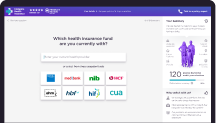Is it Bad to Keep the Same Health Insurance Policy For Several Years?
It’s not uncommon to hear people staying with the same policy for several years, sometimes even longer. They feel their policy covers them for what they need and it’s unnecessary to compare funds. Unfortunately, by doing so, many people end up paying higher premiums every year for the same level of cover.
Take a look at this scenario:
You took out a family health insurance policy in January 2020 and haven’t changed anything about the policy since. Your annual premiums at the time were $2,600. In April 2020, these payments increased by an average 2.92% and your annual bill rose to $2,675.9. Your level of cover remained the same.
In 2021, your premiums increased by 2.74% and you paid $2749.2. In 2022, your premiums increased again by an average of 3.25% and you now had to pay $2,823.4 The 2023 increase of 2.9% saw your annual premiums rise to $2,905.2. And in 2024, the 30.03% increase saw your annual premium rise to $2,993.2. So, you’re now paying nearly $400 more for the same level of cover.
In that 5-year period, health cover benefits are likely to have expanded and the range of policy options increased. Discounts and incentives would have been offered to help make funds more appealing and policies more affordable. Instead of paying $400 extra for no additional benefits, you could have secured a higher level of cover of greater value.
If you haven’t reviewed your health insurance policy in the last 12 months, it’s worth doing so before April 1. Reassess your health needs and get to know what you’re exactly paying for to ensure your health cover brings you value.
What Are My Options for Private Cover in 2024?
Feeling the pinch from the 2024 health insurance premium increase? It’s time you considered your options so you can still maintain your private health cover.
Your current health fund may be able to offer you a different private health insurance policy that’s more affordable and still meets your needs. Alternatively, you could compare the benefits of another fund.
Compare these against your existing policy and consider whether you need the same level of cover or expand the coverage to better suit your needs.
If you have hospital cover, most funds can offer more affordable options if you’re prepared to pay a higher excess or co-payment towards the cost of any future hospital treatments. If you have extras cover, you may decide to reduce some of the benefits that you don’t use to reduce your annual premiums.
Let Us Help You Find the Right Health Insurance Policy For Your Needs
If you think it’s time to consider your health options, all you need to do is compare policies to find the best cover for you.
With our comparison tool you can compare a range of hospital, extras, combined and ambulance cover in just a few minutes from health funds.
Finding the right private health insurance policy that suits your budget and needs couldn’t be any easier!





